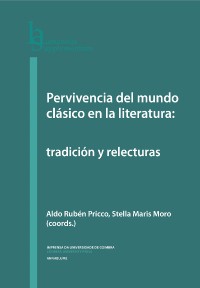Please use this identifier to cite or link to this item:
https://hdl.handle.net/10316.2/90297| Title: | La reinterpretación del monstrum. Análisis de Calígula de Albert Camus | Other Titles: | The reinterpretation of the monstrum. Analysis of Albert Camus’ Caligula | Authors: | Zapata, Patricia | Keywords: | Calígula;logos;pathos;existencialismo;teatro del absurdo;Calígula;lógos;páthos;existencialismo;teatro del absurdo | Issue Date: | 2017 | Publisher: | Imprensa da Universidade de Coimbra | Journal: | http://hdl.handle.net/10316.2/42874 | Abstract: | The purpose of the present article is to analize the tension between logos
and pathos exposed in Caligula of Albert Camus. This play describes and structures the
existentialism whose dialectic, like a program, is based in a relationship with rien, liberté,
fou and raison. Our exploration begins with Suetonio’s biography that explains emperor’s
contradiction and his evolution from princeps to monstrum (22). Based upon this character,
in the middle of twenty century, in a context of two wars, Camus through Calígula develops
the conflict of the human being with the power and the way this one has structured
occidental history. In Girardet terms (1999:69), the construction of historical characters
and his actions, we can argue that Camus has resignified, he has reelaborated mythically
Caligula due to the memory, selective mechanisms, repressions and amplifications. El propósito del presente trabajo es analizar la tensión entre lógos y páthos que se expone en Calígula de Albert Camus. Esta obra describe y estructura la filosofía existencialista en cuya dialéctica, a modo de programa, Camus expone relaciones con rien, liberté, fou y raison. Nuestro recorrido parte de la biografía de Suetonio que refleja la contradicción del emperador y su evolución desde un princeps a un monstrum (22). Teniendo como referencia a este personaje, a mediados del siglo XX y en el contexto de dos guerras, Camus a través de Calígula expone la relación conflictiva del hombre con el poder y como éste ha estructurado la historia del mundo occidental. Tal lo señalado por Girardet (1999: 69) al referirse a la construcción de los personajes históricos y sus acciones, podemos destacar que Camus ha resignificado, ha elaborado míticamente a Calígula, según los juegos ambiguos de la memoria, mecanismos selectivos, represiones y amplificaciones. |
URI: | https://hdl.handle.net/10316.2/90297 | ISBN: | 978‑989‑26‑1438‑0 978‑989‑26‑1439‑7 (PDF) |
ISSN: | ISSN:2182‑8814 | DOI: | 10.14195/978-989-26-1439-7_16 | Rights: | open access |
| Appears in Collections: | Pervivencia del mundo clásico en la literatura: tradición y relecturas |
Files in This Item:
| File | Description | Size | Format | |
|---|---|---|---|---|
| la_reinterpretacion_del_monstrum_analisis_de_caligula_de_albert_camus.pdf | 569.29 kB | Adobe PDF |  |
Items in DSpace are protected by copyright, with all rights reserved, unless otherwise indicated.
